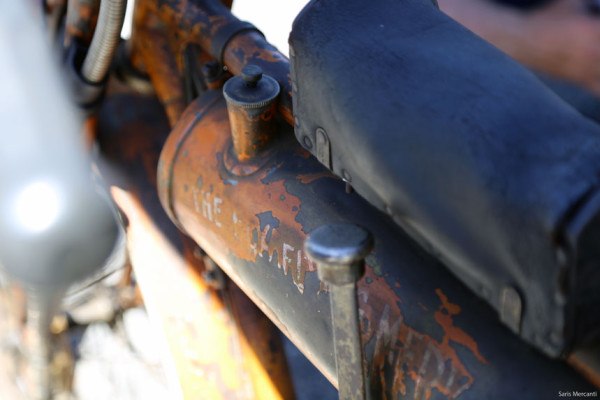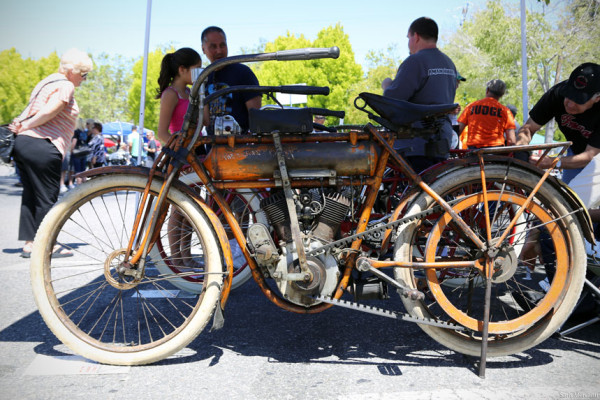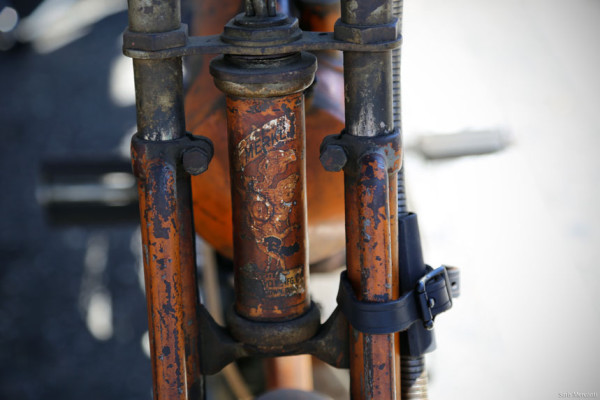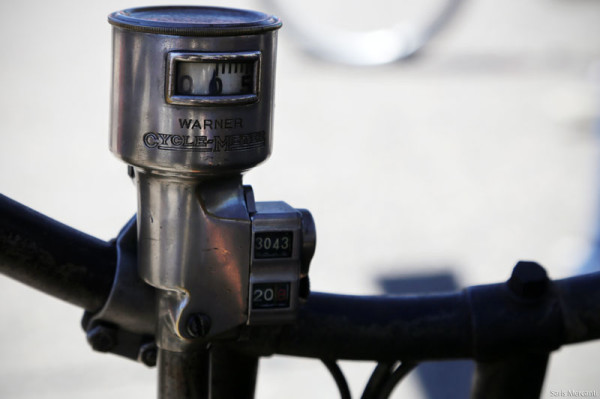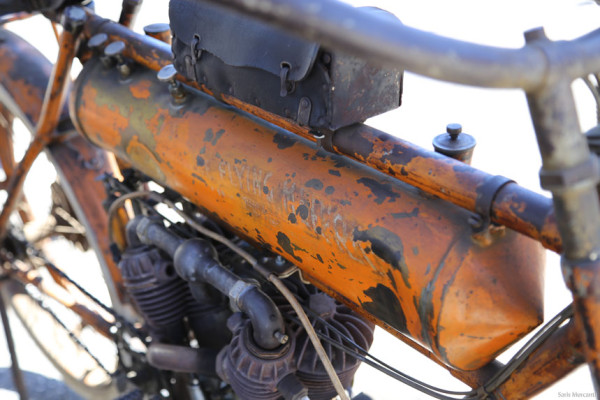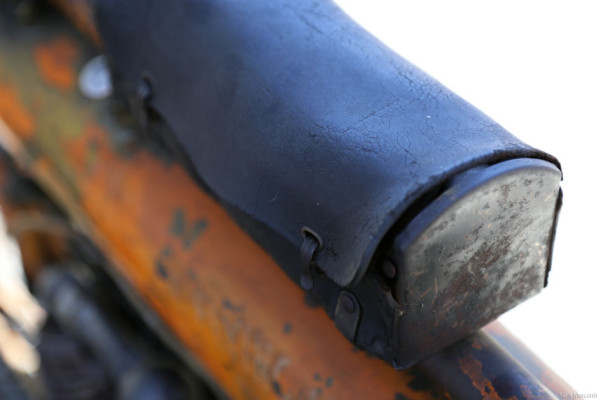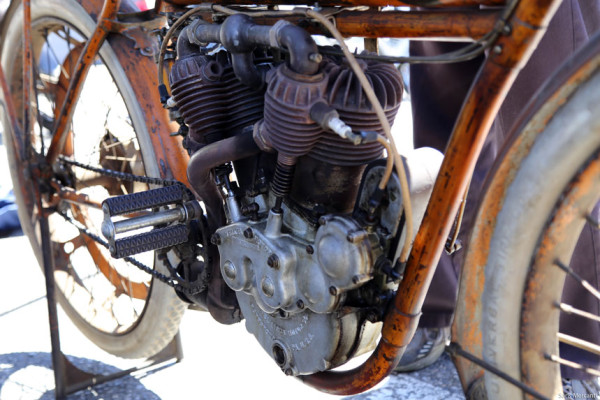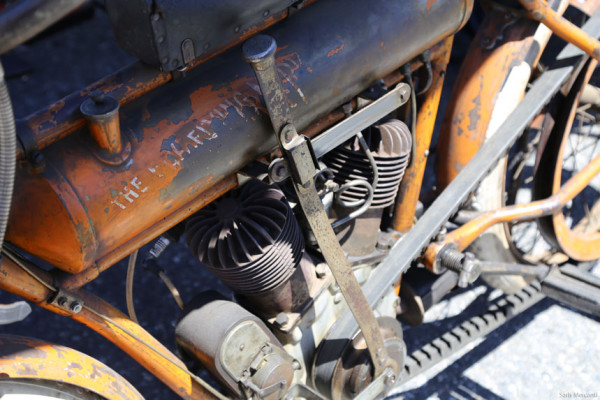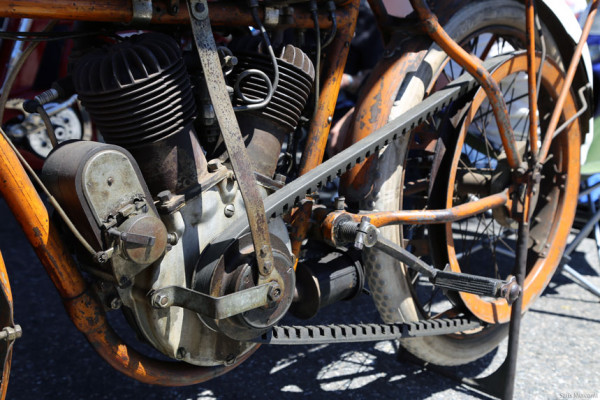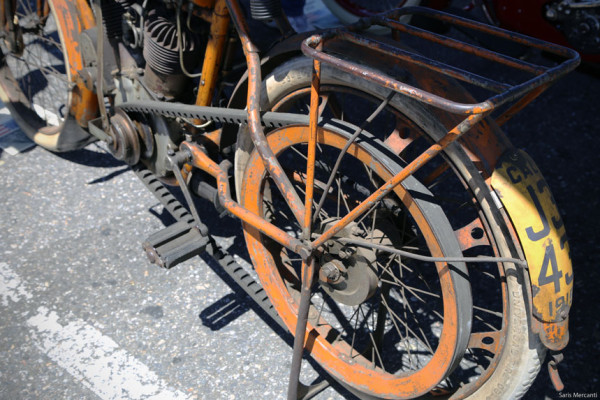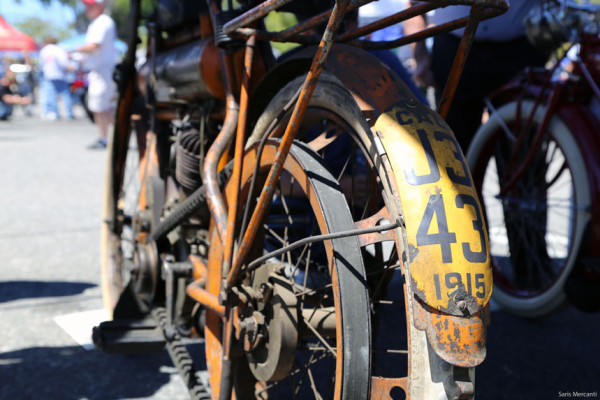At the turn of the 19th century, scientists has begun to make major advances in internal combustion technology, which allowed the motorcycle to become a reality. The first of these new products were developed by cycling manufacturers, and many of the first motorcycles were simply bicycle frames that had been adapted to accommodate motors.
During this unique era in two wheeled development, the Flying Merkel was one of the most innovative fusions. There are few surviving models in existence, but during the short time the small company produced motorcycles, founder Joseph Merkel created such innovations as the spring front fork, monoshock rear suspension (which is still used today on modern motorcycles), the use of ball bearings as opposed to bronze bushings in the engine, and several other things you’d have to be an engineer to truly appreciate.
This past weekend I had the opportunity to ogle on of these rare bikes at a motorcycle show and take a few pictures, so head past the break for a little slice of history in this special edition of MotoRumor.
This is an un-restored Flying Merkel VS, which was produced in 1911. The Merkel brand began producing bicycles in 1902, but by the next year, they also started manufacturing single cylinder motorcycles.
One of the biggest innovations the company is known for is the “truss fork.” This patented spring fork was the forerunner of the modern telescopic fork, and was effective, it was utilized by other manufacturers on their race bikes through the 1920s.
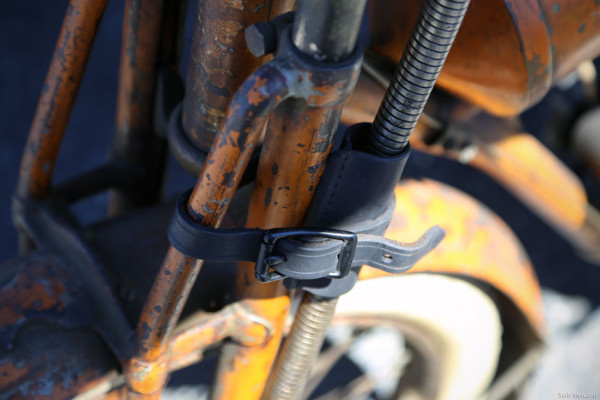 Before zip ties, there was leather.
Before zip ties, there was leather.
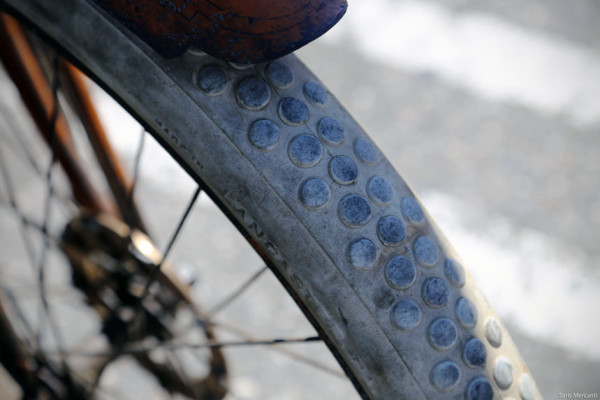 Whether four wheels or two, there’s nothing more important for performance than a good set of tires.
Whether four wheels or two, there’s nothing more important for performance than a good set of tires.
The Merkel rolled on 36H 28″ rims. Insert stupid Enduro/650B joke here.
This Warner Cycle-Meter was found on a variety of vintage bikes of the era and is a combined speedometer and odometer. According to a copy of Motorcycle Illustrated published in 1911:
“The instrument consists of a cylindrical casing in which is mounted a cylindrical dial on hardened pivots, the dial being retrained by a hair spring from rotation. Under this dial is a ring magnet, driven from the flexible shaft, which in its turn is driven by a multiple snail gear on the front wheel. On the magnet revolving, the magnetic “drag” causes the dial to partially rotate in the same direction, and as the dial is marked with the speeds in miles per hour the correct speed is shown in a window in the outer casing. The trip and season odometer trains are driven from gearing attached to the upper end of the flexible shaft and constrained within an extension of the cylindrical casing.”
One of the most distinctive elements of the Flying Merkel is it’s gas tank. Between the trademark on the tank, and the (once) shiny orange paint, you shouldn’t have any difficulties identifying one of these rarities.
Top tube mounted tool bag.
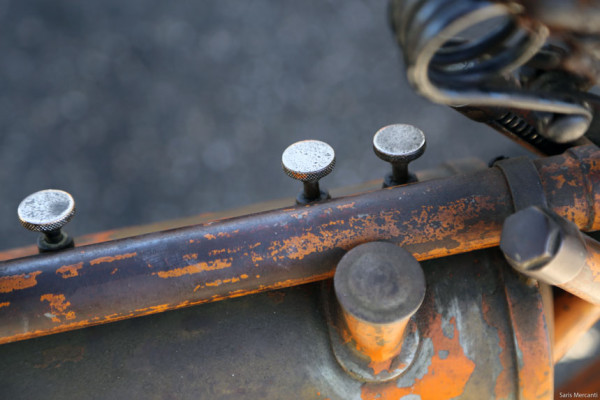
Unfortunately I failed to ask the owner of this motorcycle what these levers did, and couldn’t find any info readily online, does anyone know what they do? If so, please drop some knowledge in the comments.
According to the catalog, the basic model was powered by a “Merkel improved, ball-bearing, air cooled, 3.45″ bore, 2.35″ stroke,” single cylinder motor that could push 4 HP, and was capable of powering the bike up to 50 miles per hour.
There were two other racing models, the V & VS. The VS pictured here was the most powerful. This bike’s twin cylinder engine was capable of producing 7 HP when new, and hitting speeds of seventy miles per hour.
These engines were capable of being reliably ridden over 25,000 miles. Merkel largely attributed this reliability to the use of ball bearings rather than bronze bushings in the engine, which helped reduce friction to a minimum and were easy to replace.
Another major innovation was the spring frame, which pioneered the use of mono shock rear suspension. The frame is hinged at the pedal crank axle with a high grade bronze bushing, and a spring where the rear triangle connected to the main frame at the top tube/seat junction provided 4 to 5″ of squish. This suspension design was later popularized by Yamaha in the 1970s and is used on virtually all modern motorcycles.
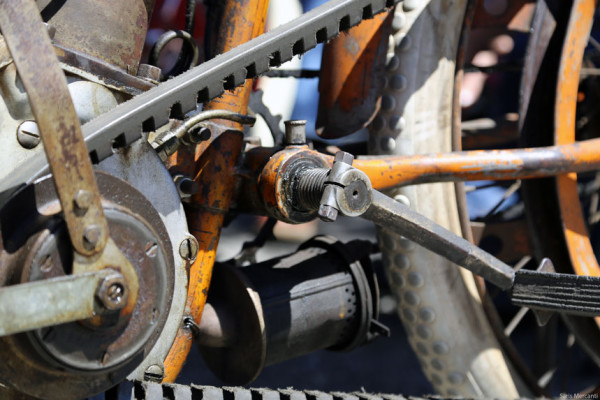
If you were looking for the bicycle connection, here it is – pedals.
The lucky owner of this bike explained that while someone with strong legs could possibly pedal the Merkel around the block, they’re really only intended to get the bike started, and stop it.
In the early days, motorcycles didn’t have brakes. The first bikes relied on using your legs to slow to halt, but as they became faster, manufacturers improvised. While some settled on affixing a steel plate that could be pushed onto the front wheel to slow down, others like this Merkel utilized a coaster brake.
The Luggage Carrier rack was an additional $5 OEM accessory.
Want one? A hundred years ago an entry level Merkel would have set your great grandpa or grandma (give or take a generation) back a cool $250. An additional $75 would have separated them from this hot rod VS model. The terms were 20% down with order, and the rest of the balance C.O.D. Recently though, an unrestored 1913 model sold at auction for $201,250.
To learn more about these awesome machines, head to The Flying Merkel.
